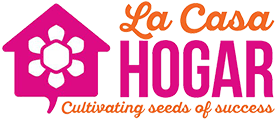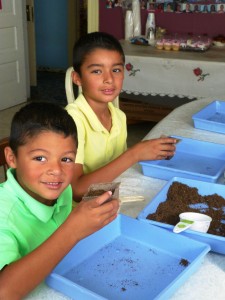
La Casa Hogar’s Early Learning Center (“Escuelita”) serves under-resourced children ages 3-5, who would not otherwise access pre-school education. We incorporate STEM-based education and use the Creative Curriculum to guide our classes and student observations. We serve over 45 children per year and 30 parents, primarily mothers, through our co-located STEM parent education classes. Children attend a preschool setting either MWF (two classes of students) or TTH (one class of students) for two hours each day. Every morning, Latin@ parents come with their young children and play with each other for the first 10 minutes of the schedule. For some families, this is the only focused time the parents have with their child. After, they sing bilingual welcome songs together, thus facilitating a trusted space and healthy interactions between children and parents. Mothers than go upstairs to participate in their English, computer and/or drivers’ education classes, while their children participate downstairs in early learning incorporating both STEM and the Creative Curriculum. Each quarter, our ELC team works closely with approximately 15 children. Each child’s progress is tracked across 22 growth objectives in six key areas of development. The Creative Curriculum is the state recommended
Program Priorities
- Healthy and safe child development
- Parent Participation
- Establishing healthy life habits
Creative Curriculum
The creative curriculum tracks children’s development across 6 key areas.
- Socioemotional: This benchmark tracks children’s development both with respect to their capacity to socially interact with their classmates and understand their and others emotions to respond appropriately. At La Casa Hogar, we believe this area is the most important in contributing to a child’s success overall.
- Physical: The physical benchmark tracks both fine and gross motor skill development.
- Cognitive: The cognitive benchmark is the most complex of the areas. It involves developing children’s capacity to imagine and solve problems as well as recognize how they think and learn.
- Language: This area focuses on a child’s comprehension and speech development.
- Literature: Reading letters and listening to sounds are the key components of this area.
- Mathematics: The mathematics area encourages students to count, quantify, measure, develop spatial relations, and learn numbers.
For more information, email info@lacasahogar.org or call (509) 457-5058.



